Categories
Oily Waste Cans & Disposal Containers
All Justrite waste disposal safety containers are designed to prevent the spread of fires caused by stray sparks or spontaneous combustion. A number of options are available to safely dispose of oily rags and cloths, combustible trash and waste paper.
Read more
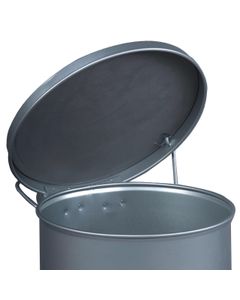
SoundGard™ Oily Waste Cans 0908 Justrite oily waste safety can Silver
Dispose of oil-soaked rags and prevent fires caused by stray sparks or spontaneous combustion. SoundGard™ style in silver or red lessens noise closure for quiet-working settings.
Available in 4 versions

SoundGard™ Oily Waste Cans 0908 Justrite oily waste safety can Red
Dispose of oil-soaked rags and prevent fires caused by stray sparks or spontaneous combustion. SoundGard™ style in silver or red lessens noise closure for quiet-working settings.
Available in 5 versions
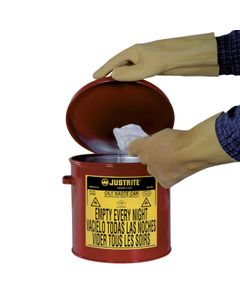
Oily Waste Cans 900 Justrite flammable waste can Red
Dispose of oil-soaked rags and prevent fires caused by stray sparks or spontaneous combustion
Available in 9 versions

Oily Waste Cans 900 Justrite flammable waste can Yellow
Dispose of oil-soaked rags and prevent fires caused by stray sparks or spontaneous combustion
Available in 6 versions

Biohazard Waste Cans 0593 Justrite Red
Biohazard Waste Containers meet OSHA 29 CFR 1910.1030 for the segregation of infectious waste. Use them to store contaminated laundry as well as other regulated waste; however, not for the storage of sharps.
Available in 2 versions
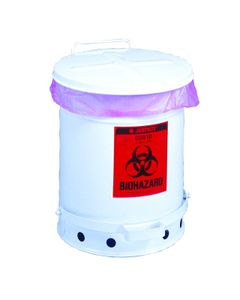
Biohazard Waste Cans 0593 Justrite White
Biohazard Waste Containers meet OSHA 29 CFR 1910.1030 for the segregation of infectious waste. Use them to store contaminated laundry as well as other regulated waste; however, not for the storage of sharps.
Available in 3 versions
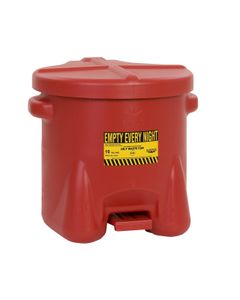
Poly Oily Waste Can 93FL Eagle Red
Poly Oily Waste Cans offer fire safe temporary storage of waste rags to prevent spontaneous combustion.
Available in 3 versions
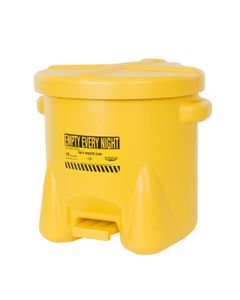
Poly Oily Waste Can 93FL Eagle Yellow
Poly Oily Waste Cans offer fire safe temporary storage of waste rags to prevent spontaneous combustion.
Available in 3 versions

Poly Oily Waste Can 93FL Eagle Black
Poly Oily Waste Cans offer fire safe temporary storage of waste rags to prevent spontaneous combustion.
Available in 3 versions
FAQ about Oily Waste Cans & Disposal Containers
Can I use poly liner bags in my Justrite Oily Waste Can?
We discourage the use of liner bags in Oily Waste Cans (OWC). The liner can interfere with the OWC's lid fully closing. A liner can also create a path for an oxygen supply to the bottom of the can. Both conditions defeat the purpose the self-close lid and its ability to deprive the container of oxygen, which inhibits combustion.






